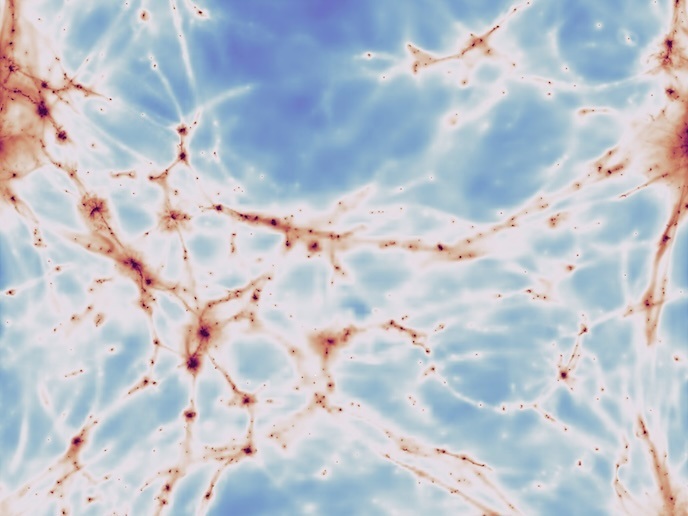Understanding the link between gas and galaxies
According to the current cosmological model, galaxies are formed within what is called the cosmic web – a collection of over-densities connected by a network of filaments. “Entangled within these filaments, galaxies are part of a cosmic ecosystem where their interaction with surrounding gas shapes drives their evolution,” says Michele Fumagalli(opens in new window), an astrophysicist at the University of Milano-Bicocca(opens in new window). Understanding galaxy evolution means looking at the denser gas regions that surround galaxies. To do so, scientists use a process called absorption line spectroscopy. “With absorption line spectroscopy, the gas we want to study is probed in silhouette against bright and unrelated background sources,” explains Fumagalli. However, even this powerful approach has its limitations. For example, because the process involves probing gas along a very narrow pencil beam, the information recovered about its spatial distribution tends to be limited. “Moreover, to relate the gas probed in absorption with the properties of the galaxies, very deep and complete surveys of the galaxies surrounding the detected gas clouds are needed, which require significant effort even when using the largest telescopes,” adds Fumagalli. With the support of the EU-funded FEEDGALAXIES(opens in new window) project, Fumagalli is leading an effort to address these observational shortcomings.
Leveraging the power of integral field spectrographs
At the heart of this effort is the development of novel analysis techniques capable of exploiting the groundbreaking nature of integral field spectrographs, including the multi-unit spectroscopic explorer(opens in new window) (MUSE) installed at the very large telescope of the European Southern Observatory(opens in new window). The complex instrument is comprised of 24 spectrographs that work in tandem to produce a data cube where every pixel of an image has an associated spectrum attached. “The project spent considerable time and effort developing state-of-the-art techniques for turning MUSE observations into very high-quality data that has revolutionised our view of the link between gas and galaxies,” notes Fumagalli.
A more complete picture of how galaxies assemble and evolve
With this groundbreaking technique in hand, researchers turned their attention towards the cosmic web and began exploring – and discovering. Amongst these discoveries is the acquisition of direct images of the shape and chemical content of the gas filaments and gas envelopes near galaxies. The project team also obtained new evidence of how this gas phase – an essential ingredient for the assembly and evolution of galaxies – evolves with time and changes with the number of close neighbours near galaxies. Another key outcome was an expanded view of the gas-galaxy connection into a novel region of parameter space, reaching smaller galaxies that have remained elusive in the past but that account for most of the galaxies that populate the universe. “Our research has added to our appreciation of how galaxies assemble and evolve into the objects we see in the universe today, creating a more complete picture of the events that lead to the assembly of the general galaxy populations, including our own Milky Way,” remarks Fumagalli.
The benefits of imaging the diffuse gas surrounding galaxies
By combining emission and absorption data, the FEEDGALAXIES project, which received support from the European Research Council(opens in new window) (ERC), has reshaped our understanding of the gas distribution around distant galaxies. “Previously, our knowledge of the gas environment of distant galaxies was limited to a more indirect technique, spectroscopy in absorption,” concludes Fumagalli. “With our new ability to image the diffuse gas surrounding galaxies, we have gained unprecedented insights into how galaxies evolve over time.”







